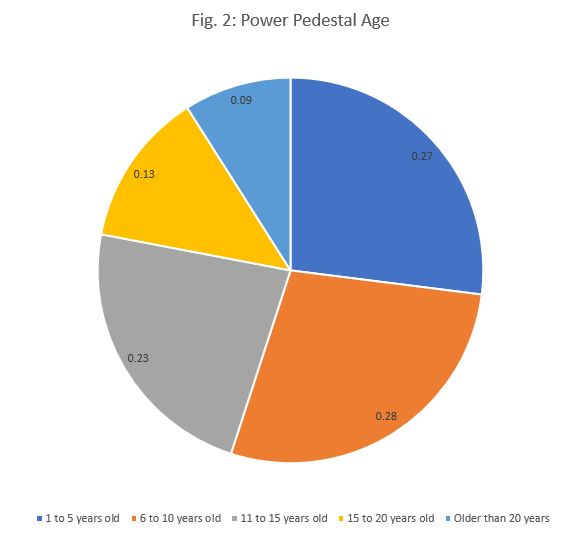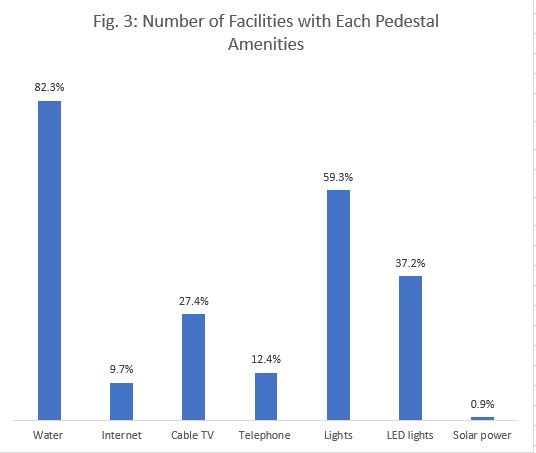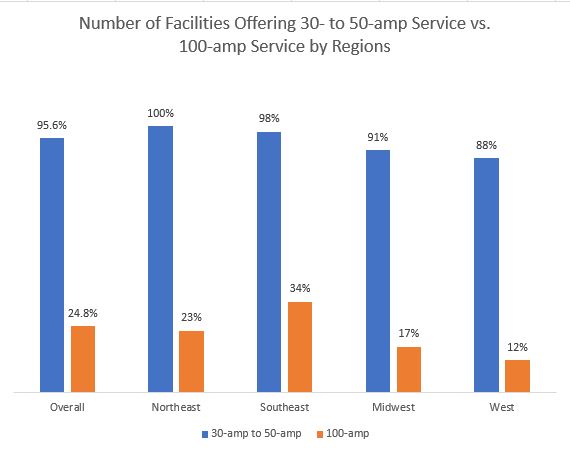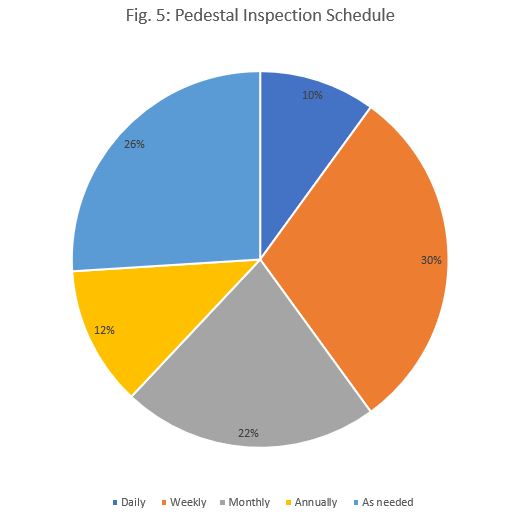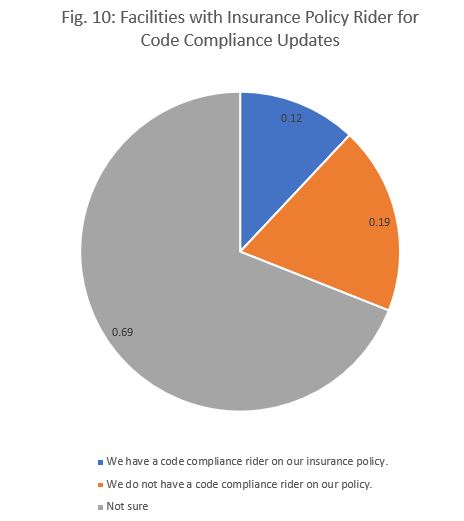Survey Outlines Power Pedestal Services, Technology and Maintenance Needs
Published on October 16, 2018Editor’s Note: This is our first product survey on power pedestals. Marinas were surveyed during September 2018 about pedestal types and amenities, maintenance and upgrades, metering and monitoring, and insurance and regulations.
Power Pedestal Overview
Fig. 1 indicates the number of pedestals at each facility that responded to the survey. The majority (57.7%) had less than 100 pedestals. Fig. 2 indicates the age of power pedestals at facilities. A slight majority (28%) of pedestals were between 6 and 10 years old; 27% were 1 to 5 years old. No pedestals were less than one year old. Fig. 3A shows some of the amenities available at pedestals. The majority of facilities (82.3%) offer water at pedestals; 59.3% have pedestal lights, including 37.2% that use LED lighting. Fig. 3B looks specifically at power service for pedestals (30- to 50-amp service vs. 100-amp) on a regional basis. The majority of facilities in all regions offer 30- to 50-amp service. More facilities in the Southeast (34%) offer 100-amp service, followed by the Northeast at 23%.
Maintenance and Upgrades
Inspection and maintenance are an important part of pedestal operation. Fig. 4 shows how often facilities perform required maintenance on power pedestals. The majority of facilities (48%) do annual maintenance. More than one-quarter (28%) do monthly pedestal maintenance, and 17% do maintenance less than annually. Fig. 5 indicates the schedule for regular pedestal inspections. Some facilities (30%) do weekly inspections; 26% of facilities do inspections as needed; and 22% of facilities inspect their pedestals monthly. Fig. 6 asked facilities to indicate when they anticipated replacing their current pedestals. The majority (64.8%) weren’t sure of their replacement needs. Within three years, 19.4% of facilities will need to replace pedestals.
Pedestal Technology
Some facilities with transient slips have begun offering mobile access to customers via a key code, card swipe or other method. Only a small number of facilities currently offer mobile access (6.4%). Of those facilities that didn’t offer mobile access but were interested in the service, the majority (33%) were from facilities in the West. A larger number (24%) of facilities in the Southeast were also interested in mobile access for customers. Fig. 8 shows the number of facilities that offer different pedestal options for monitoring and metering power usage. The largest majority (51%) of facilities meter electric. More facilities do that in the West (70.6%) and the Southeast (70.2%).
A small number of facilities use wireless meter reading and wireless access to turn power on and off at pedestals. Fig. 9 asked facilities specifically about their methods for ground fault protection. Overall, the majority of facilities provided circuit breaker protection at each pedestal (51%). That number varied some regionally, with the largest number in the Northeast (69.2%) and the fewest in the West (20%). Fewer facilities provide ground fault protection at the distribution panel or with a separate ground fault management system. Overall, 19% of facilities do not provide ground fault protection.
Regulations and Insurance
The National Fire Protection Agency (NFPA) National Electric Code (NEC) sets the standards for electrical safety. The NEC is updated every three years, but state adoption varies widely. Facilities are only required to update for each new standard, if it undertakes renovations. Fig. 10 asked facilities what annual NEC standard it followed. Twenty-eight percent of facilities used a NEC standard older than 2008, and 21% are using the 2014 NEC standard. Twenty-two percent of facilities also indicated that they were not familiar with NEC standards. Often times, storm damage can force facilities to renovate and rebuild damaged property, forcing them to upgrade pedestal equipment to meet newer NEC standards. Some insurance policy riders can cover this cost, but only a small number of facilities indicated that they had a code compliance rider on their insurance policies. Also, overall 69% of facilities were not sure what their insurance policies covered.
| Categories | |
| Tags |







